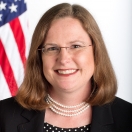
Launched by President Obama in Prague in 2009, the Nuclear Security Summit process will conclude with the fourth Summit next March 31-April 1, 2016 in Washington, D.C. Nine months out, over 50 so-called “Sherpas” – senior staff who guide their leaders toward the Summit itself – are working hard to make this last Summit both meaningful and memorable. Sherpas have met three times, and will gather twice more to complete the Summit’s final documents, to shape the Summits’ legacy, and infuse the momentum of the Summits into existing nuclear security institutions and initiatives.
President Obama, recognizing that nuclear terrorism is the greatest national security threat we face, convened leaders of 47 nations and three international organizations to Washington in 2010 to generate and highlight the political will to lock down nuclear material and intercept nuclear smugglers. Those leaders – representing diverse regions, ideologies, and nuclear viewpoints – agreed on the gravity of the nuclear terrorism threat, on the responsibility of nations to effectively secure all their nuclear materials, and on the importance of international cooperation. Participants made over 100 national commitments to improve regulations, remove and reduce excess nuclear material, build up nuclear detection systems at borders, and ratify nuclear security treaties. Two years later, over 90% of these pledges had been completed.
This moment of leader-level focus and concrete commitment was replicated in 2012 in Seoul and in 2014 in The Hague. As a result, nuclear security practices have been strengthened world-wide, over a dozen countries have entirely removed weapons-usable nuclear material from their territories, critical treaties are nearing entry-into-force, and the international institutions and initiatives that promote nuclear security have been enhanced. But there is still more to do.
At the last Summit, we anticipated not only a cascade of new national commitments, but also a consensus communique that recognizes progress made and looks to sustaining the Summits’ momentum into the future. We also expect to present agreed plans for strengthening the institutional foundations of the global nuclear security architecture: the United Nations, the International Atomic Energy Agency, INTERPOL, the Global Initiative to Combat Nuclear Terrorism and the Global Partnership Against the Spread of Weapons and Materials of Mass Destruction. Following a practice pioneered by the Dutch in 2014, leaders will participate in a policy discussion based on a realistic scenario of a nuclear security event.
Because nuclear security is not the responsibility of governments alone, we welcome the plans of the nuclear industry and the non-government expert community to host side summits, addressing their roles in enhancing nuclear security.
Laura S. H. Holgate currently serves as Special Assistant to the President and Senior Director for Weapons of Mass Destruction Terrorism and Threat Reduction on the National Security Council.


